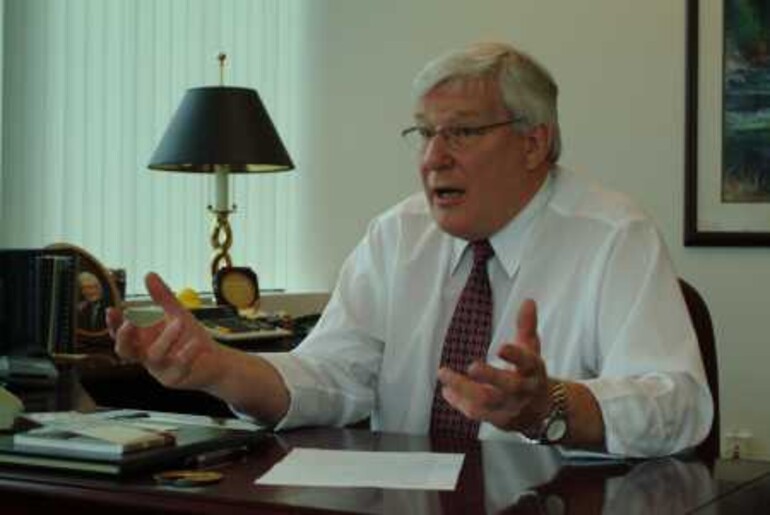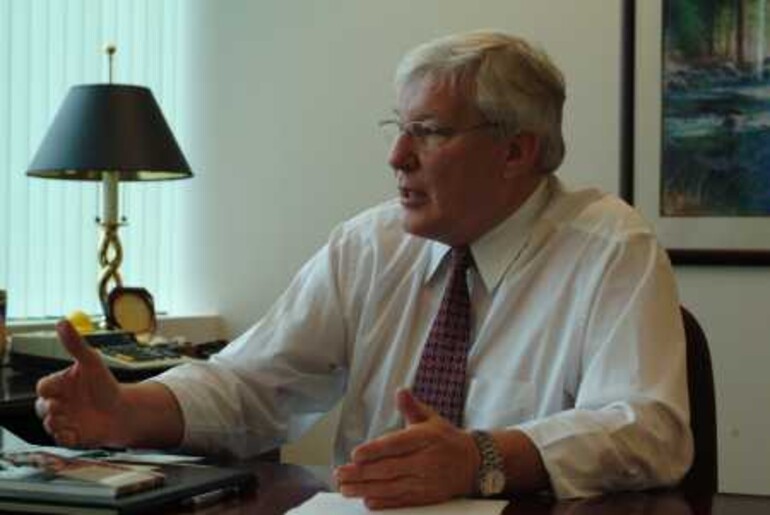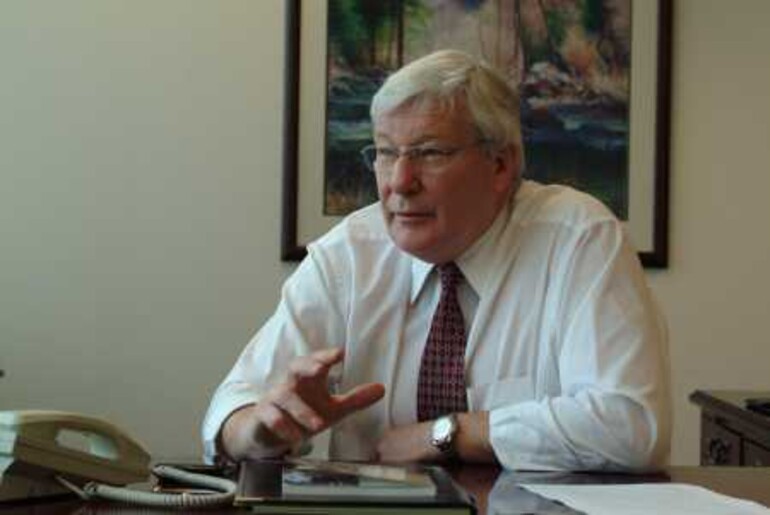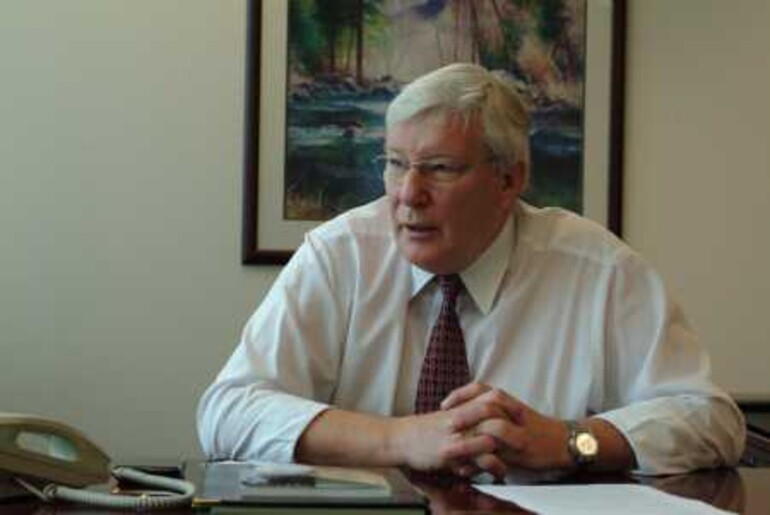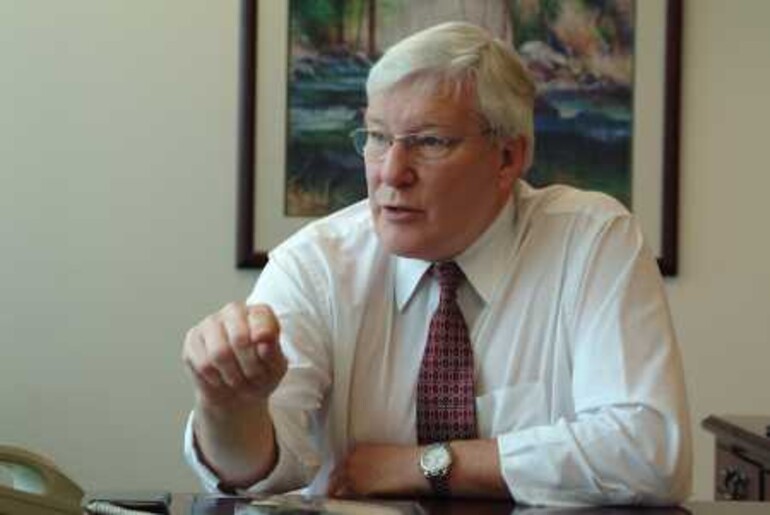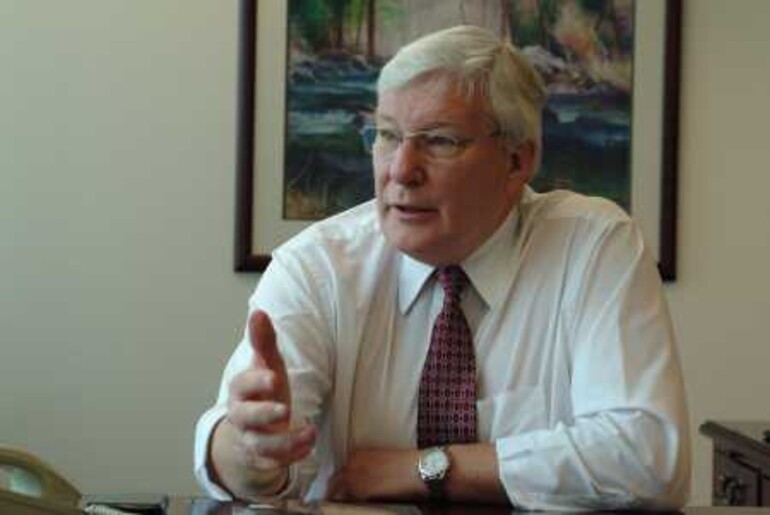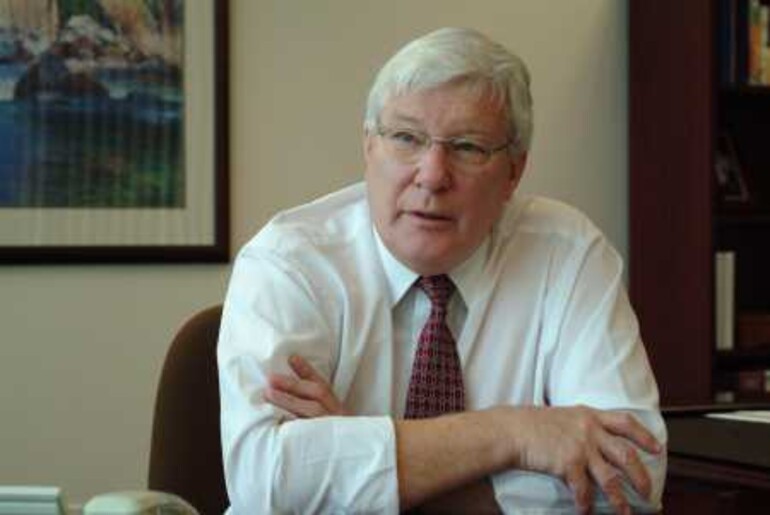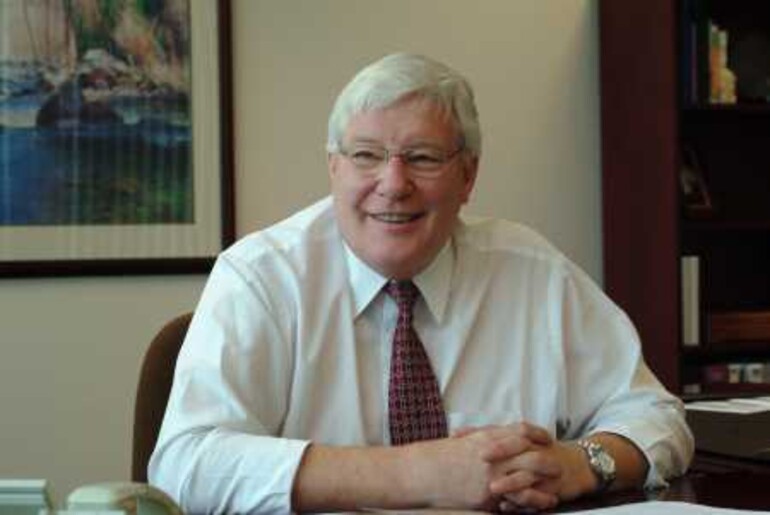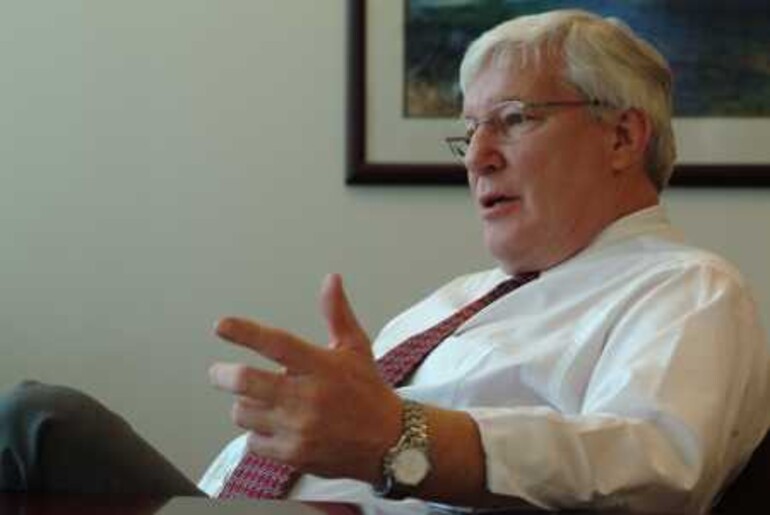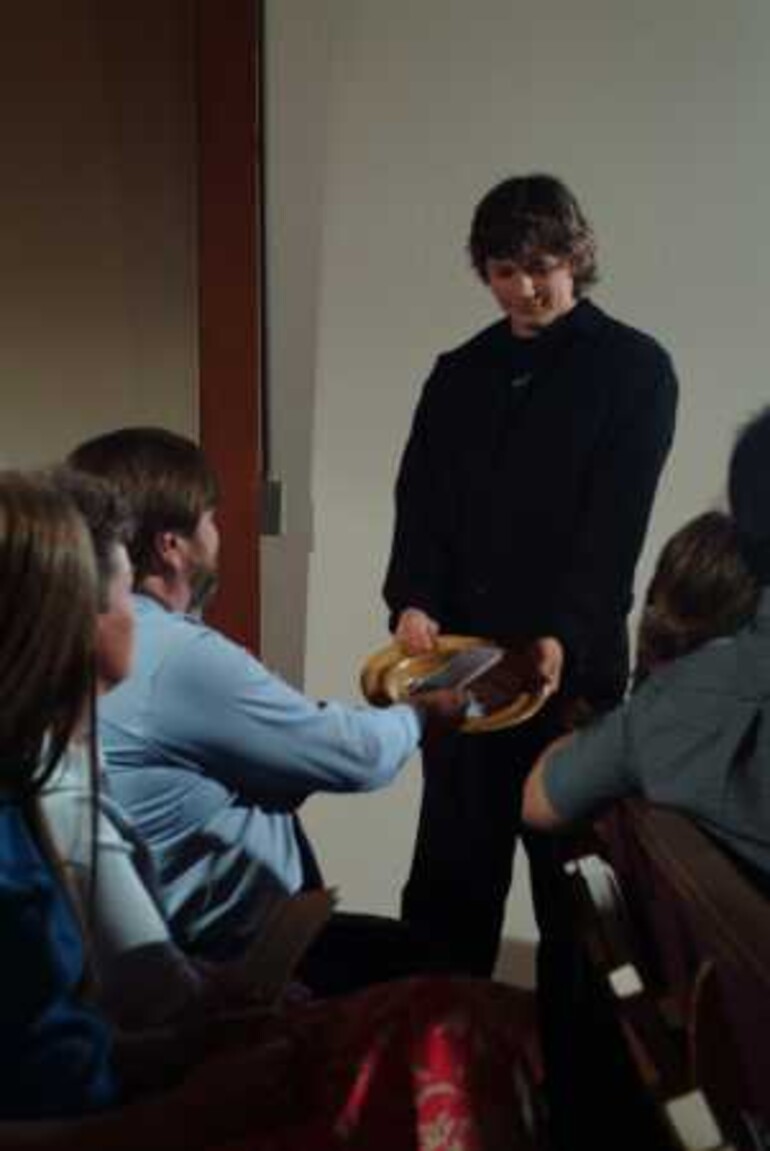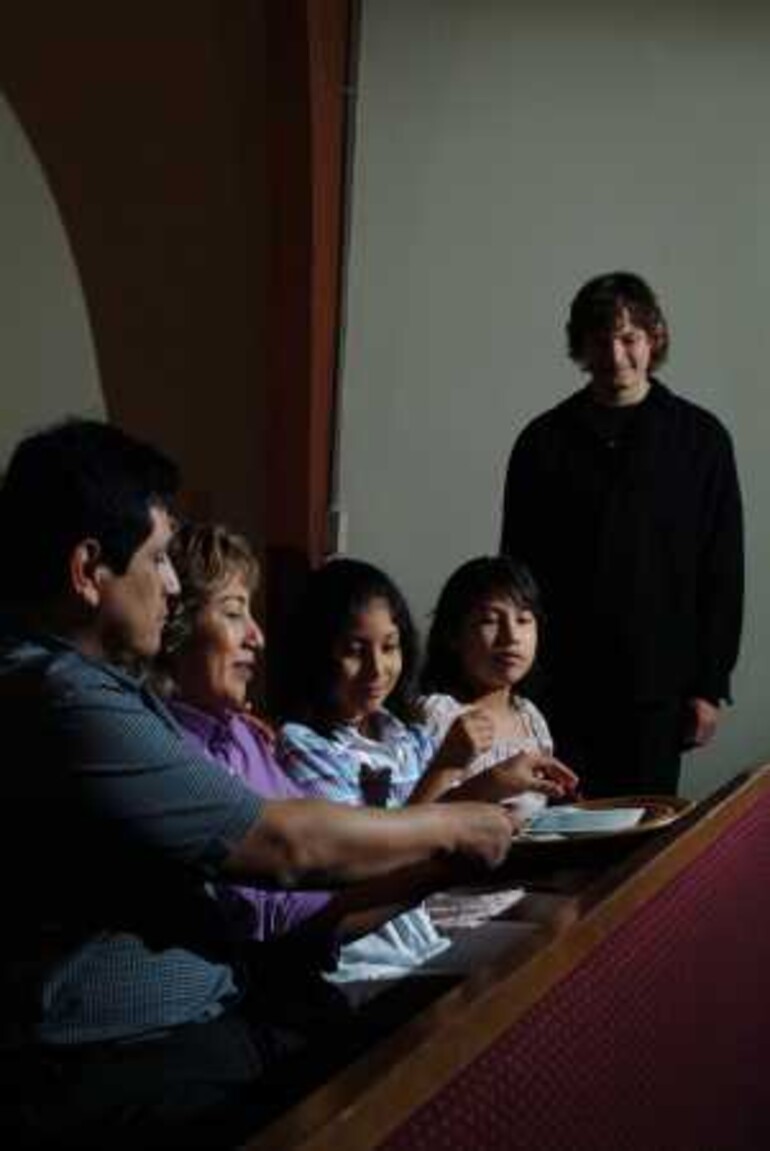This is the third of a three-part series of interviews with the officers of the North Pacific Union Conference. These interviews are presented with the hope that they will provide the readers a greater understanding of the scope, structure and workings of the Seventh-day Adventist Church. —Editor
GLEANER: What is your philosophy about tithe and its use for Adventist church mission?
KLAM: I agree with what our world church has determined over the years, using counsel from the Bible as well as Ellen G. White. And that is, tithe should be used for the support of our evangelists, pastors, Bible instructors, and those who provide administrative leadership and other services for the different ministries of the church. It’s also used to help with our teachers' salaries, since we recognize their role as spiritual leaders for our youth. It seems to me that every decade or so we form a group to restudy how tithe is used, and that’s a good thing. We should always be ready to adapt the principles to current needs. A few years ago our world church leaders looked at tithe use and determined it was time to increase the percentage of tithe that local conferences can retain. During 2005, approximately $800,000 remained with our local conferences that previously would have been sent on to the North Pacific Union Conference (NPUC). I support that kind of process when it's done prayerfully and in the spirit of unity. (See the sidebar on the General Conference guidelines for the use of tithe on page 11.)
Explain who benefits from the typical tithe dollar.
That is an interesting question. Each organization, whether conference, union, division or General Conference (GC), has policies and budgets which define who benefits from the tithe dollar. If you were to follow a tithe dollar through the process, from the tithe giver to how it is ultimately used, you would find that the local conferences spend 75.4 cents of each tithe dollar. The union uses 2.5 cents for its operation and 12.5 cents is set aside for worker retirement. The operation of the North American Division (NAD) takes 1.1 cents and the remaining 8.5 cents is used by the GC for its operations and appropriations to the world field. (See tithe dollar graph on page 10.)
Even some of the tithe that is passed along to the union, NAD and GC comes back to benefit the local conference and its churches and schools, correct?
Yes, thanks for clarifying that. Only 2.5 cents of the tithe dollar is used directly by the NPUC for union operations. While the amount we receive is more than that, the additional amount, 6.5 cents, is spent to benefit local conference programs and Walla Walla College. An example of how the local conferences benefit from the 6.5 cents is the four evangelists that are constantly holding evangelistic meetings in local churches. It is interesting to note that the conferences are now retaining about 5 percent more than five years ago.
And some of those funds are restricted to support our smallest conferences.
Yes. Here in the Northwest, we have three comparatively large conferences in membership and three fairly small conferences. The smaller conferences, especially Alaska and Montana, have a huge territory to cover but a small membership base to help fund ministry. I wish you could sit with me on their executive committees and see how they wrestle with how to keep ministry going forward in far-flung towns and villages. Now do we just say, “Sorry, you’ve got to do more with less?” I believe it’s providential that some of the tithe monies sent to the NPUC are put into a restricted fund specifically to assist our smaller conferences. I would say 20 to 25 percent of their operating budgets come from outside their local territory.
What kind of financial information is available to members regarding monthly or year-end reports?
Our church leadership needs to be accountable, not only to each member but also to the Lord, for every dollar spent in His work. That’s an awesome responsibility. A financial report can be either clarifying or confusing depending on how well it is understood or explained. Our church organizations, though, are pretty well set up with automatic checks and balances. We are carefully audited every year. We give our executive committees and academy boards monthly reports. At constituency sessions, delegates who represent each church and member are invited to look at things carefully, ask questions and expect good answers. Quite often I have members come in and ask about these things. Our books are open to them, as they should be.
What do you say to the local church board member who worries that his or her local church will be unable to fund both community outreach and the rising cost of Adventist education?
That is a challenge and one both our education and ministerial people need to help address. Certainly we want as many of our Adventist students as possible to attend a high-quality Adventist school. I believe we’re seeing a paradigm shift with more and more of our church communities wanting to expand their existing schools to 12 grades. If this trend continues, we’ll have more day academies. I wonder if that will not only increase the burden on our local churches but also eventually make it impossible to operate boarding academies as services to our more far-flung members and their children. Of course, if the educational expenses rise too high then other important outreach efforts are squeezed as well. The NPUC along with our local conferences will need to address this issue positively in the near future. I will say that of all the funds our union sends back to local conferences, more than 50 percent are earmarked for Adventist education needs.
Many corporations, even nonprofits, are under fire for the huge disparity in wages between the top executives and other employees. How are church employee pay scales determined?
This is an area where I think our church is a real leader. The basic salary of a local conference president is only 6 percent more than the average pastor’s salary. The union conference president makes 10 percent more than a pastor, and the salary of our church’s top executive, the GC president, is only 14 percent more than that of the average pastor. General pay scales are set by our world church which regularly evaluates what our employees earn. These wages tend to be based on the wage scales of each particular country or area.
From your vantage point, what NPUC services benefit the local church member?
Well, let me respond, not as a union treasurer, but as a member of my local Vancouver, Wash., church. First, I like getting the GLEANER and reading about how God is working in and through us here in the Northwest. Secondly, my local church school is accredited and the teachers have certification because of what the NPUC does. Thirdly, my church building project has been made possible because of the NPUC revolving fund. That’s the fund that Northwest members invest in so that churches can borrow from it at a reasonable rate and not have to go through all the legal ramifications that they would have to do with a commercial lending agency. And I could go on, but those are three areas that quickly come to mind. A lot of what the union provides is support to our local conference programs in ways that many of our members never see or hear about. But they are there nonetheless and they do benefit them, even if indirectly.
Will we be able to pay our tithes and offerings through debit cards or online bill-paying services anytime soon?
I believe so. The NAD is working on it as is our own Upper Columbia Conference. We will be getting a report back shortly. It only makes sense to provide a service for many of our members who rarely use conventional cash or checks anymore. There are a lot of logistical things that have to be worked out, such as how to appropriately disperse and credit the funds to each local church. As with any new technology, it can not only add some new possibilities, but also some new headaches. When we introduce a service like this, we want to do it right in order to maintain credibility and earn the confidence of our members. With the increasing problem of identity theft, we don’t want to jeopardize the security of either our members or our churches. So we’re not rushing into it, but we are proceeding and realize something like this needs to happen soon.
A lot of independent but supportive ministries in the Northwest and in North America are financed by Adventist members. Are they taking dollars away from essential church ministries and its overall mission?
I don’t think so. I think that they are helping to provide ministry in some areas that the church is not necessarily doing. I believe God is blessing in both arenas. The Adventist-laymen’s Services and Industries (ASI) organization and the church have worked hand in hand for years.
The number of charitable nonprofit organizations are projected to double in the next 15 years. They all will be looking for support from the same dollars. How is this projected to affect giving to the church?
I believe those organizations that have a clearly stated mission and go about doing it with all their heart and soul will be blessed with what they need to carry it out. Having said that, it's so important that each one of us and our leaders be personally connected with God. Not everybody that works for the church in leadership has a relationship with Jesus, and when that happens you have the same effect that you had with the judges and the kings that didn’t follow Jesus. When that happens in a church or a conference it suffers for a period of time. It’s so easy to get so busy running around that you don’t take time with your Bible or you don’t take your time with your friends to talk about Jesus. We can’t…I can’t let that happen.
Isn’t that part of the philosophy behind the Beyond the Bottom Line seminars you have helped create for our church’s financial personnel?
Exactly. Beyond the Bottom Line is a two-day seminar that operates specifically for conference treasurers, associate treasurers, academy and college business managers with information that would be beneficial to them with current trends. We hosted one this year and plan another for 2008. We have had some great seminars asking our church financial people to look at growing professionally and spiritually, to be ethical, to be honest and yet be up to speed with the newest techniques that are coming out. In our world today, it is important that we try to be the best church managers possible, and that we do it all in the context of our love for the Lord. Excellence has to be a requirement.
As you think about the mission of our Adventist church in the Northwest for the coming few years, what do you think is most important?
Our church has a mission to tell everybody that Jesus is coming. Our financial planning needs to be done so that we can do that. It’s imperative that we find new and creative ways to tell people about Jesus. Our NPUC president is working with our local conference presidents on some exciting things for the future. When he lays out the strategic plan for the next five years during this year’s report to the constituency, I believe we’ll all get excited and move forward together.
When you were a boy, did you ever envision yourself as a treasurer for the church?
Oh my, I grew up a little farm boy in a farmhouse half a mile off the road. I wanted to be a hockey player or a politician. I wanted to run Canada. I wouldn’t have made it. God took over and changed me. When I got out of college I recognized that life wasn’t just for fun and I had to get serious about it. It was a slow process.
As you start out each day, ready to lead out in handling the financial trust of 90,000 Northwest church members, what do you pray?
When I pray in the morning, I thank God for the wonderful people I work with, and I say, “Please keep me close to you today, Jesus, because if I am close to you, I’ll be OK.”




